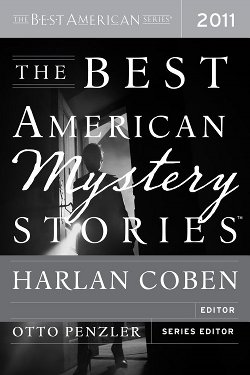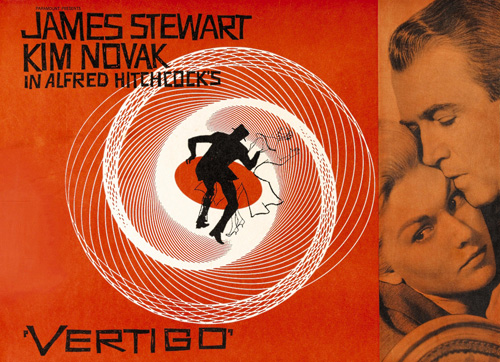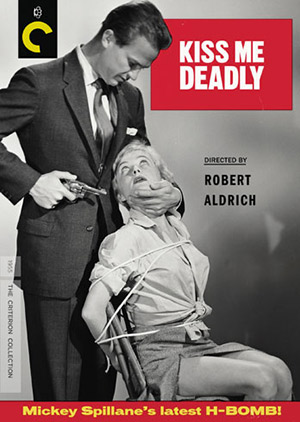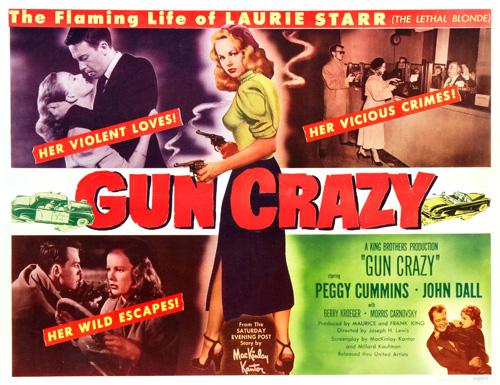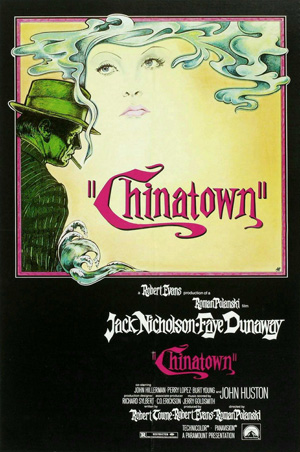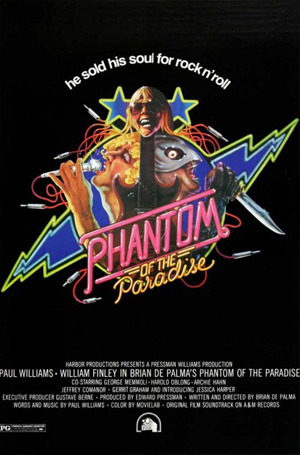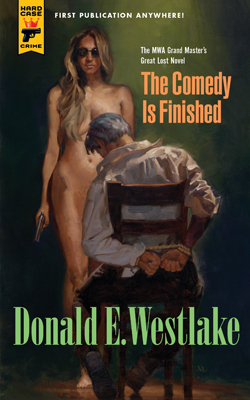Last week I came up with a list of my favorite sixteen movies, which got some interesting reaction. But that number was ungainly, so I’ve decided to bring it up to 25 Favorite movies with nine more.
Understand that I’m not listing my take on best movies. This is a personal list. Ed Gorman responded to mine in his blog, saying he liked my choices and then listed his. Every one of Ed’s favorites were films I like a lot, yet none were on my favorites list, which I define by how often I want to return to these films. A favorite film is a place you want to revisit, like a cottage on the lake or a restaurant that’s worth a fifty-mile drive.
Both Ed and I have been questioned because we have so few foreign films (he has one, DIABOLIQUE) on our lists, and also that so few films are included that were made in the last couple decades. Barb and I go to the movies just about every week, sometimes more than once – I don’t know anybody except Leonard Maltin who sees more movies than I do. But the films that resonate for me are Hollywood born, in the mid-20th Century. These films – like the books of Hammett, Chandler, Cain, and Spillane – influenced me. So I celebrate them here.
I also plan to follow up with a favorite director’s list. Many of my favorite films are not courtesy of my favorite directors – for example, the Randolph Scott westerns of Budd Boetticher are among my most loved films, but I view them as a body of work. Some of my most loved directors made the list last week – Hitchcock and Joseph H. Lewis, for example – but most did not.
By the way, I did not watch the Academy Awards this year. I almost never do (the year ROAD TO PERDITION was up for a bunch of Oscars was the last time). I watch a movie instead.
For now, here are the rest of my Top 25.
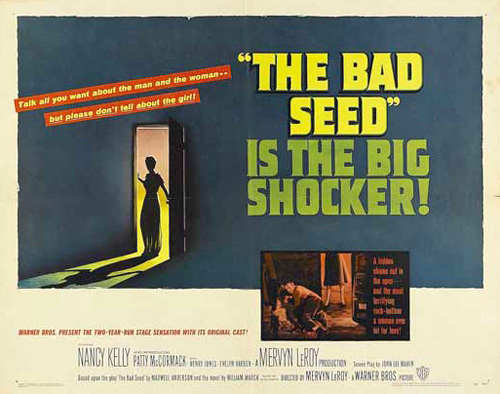
17. THE BAD SEED (1956). This should be no surprise to anyone, since my indie film MOMMY (1995) has been called an unofficial sequel, casting Patty McCormack as a grown-up variation on homicidal child Rhoda Penmark. The novel by William March and the play by Maxwell Anderson are both brilliant works, and director Mervyn Leroy’s faithful, gently opened up recreation of the Broadway hit captures all the black humor and dread of both. Leroy often gets criticized for the Hollywood ending, but there is a WIZARD OF OZ-like otherworldly tone to Rhoda walking in the thunder storm in her little raincoat, running her flashlight along a picket fence, on her way to once and for all retrieve the spelling medal (which made the “pen marks” on little Claude Daigle’s forehead and hands). The much criticized curtain call, with Nancy Kelly spanking Patty was actually part of the stage play, considered a necessary cooling off after the shock of the original (Rhoda surviving her mother’s efforts to kill her). Astonishingly, Nancy Kelly (sister of Bart Maverick, Jack Kelly) never had another movie role, despite her Academy Award nomination and a wonderfully melodramatic performance worthy of Bette Davis or Joan Crawford. The new Blu-ray reveals nuances in Patty’s performance that reveal her already understanding the difference between stage and film.
18. MARK OF ZORRO (1940). As a kid and even today I am a sucker for swashbuckling movies, and Tyrone Power was the 1940s king of those, the sound-era version of Douglas Fairbanks (literally in this remake). Johnston McCulley’s novel is faithfully followed in this, the greatest of all Zorro films, with perhaps the most exciting duel ever put on him as Power faces down evil Basil Rathbone, who could actually fence. Rouben Mamoulian directed this funny, sexy, exciting film with a rousing score by Alfred Newman. One to watch again and again.
19. POINT BLANK (1967). John Boorman’s spellbinding pop art, European-influenced take on the Richard Stark “Parker” novels transcends a spotty script to become one of the two most influential crime films of the ‘60s (BONNIE AND CLYDE is the other). Haunted zombie Lee Marvin walks through this dream-like neo-noir landscape (he’s named Walker, after all) exhibiting a quietly sociopathic intensity that makes this almost a horror film.
20. PRETTY POISON (1968). Another dream-like film, this one is heavily influenced by BONNIE AND CLYDE and plays off the Perkins PSYCHO persona as well. Yet it is strikingly original, funny, dark, and disturbing. Tuesday Weld is so fetching and sweetly evil that just about any heterosexual male would do for her the things Perkins does. Why director Noel Black did not enjoy a major career after this is a sad mystery.
21. DAMN YANKEES (1958). Another of that small handful of Broadway musicals brought faithfully to the screen, with stars Ray Walston (his signature performance, despite my wife referring to him as “My Little Martian”) and funny, sexy Gwen Verdon doing her famous “Whatever Lola Wants.” A great score from the PAJAMA GAME team of Richard Adler and Jerry Ross (Ross would tragically die young after these two great shows) provides the spine of this terrific Faust story in which a baseball fan learns that he actually loves his wife more than he does the Washington Senators. Tab Hunter is excellent here, despite critical carping, and Walston is just fantastic as Applegate (“I see cannibals a’munchin’, a missionary luncheon”). You go to the ball game. I’ll stay home and watch this.
22. RIO BRAVO (1959). John Wayne and Howard Hawks answer HIGH NOON in this classic western where the sheriff turns down help from the citizens. Dean Martin turns in his finest performance as the reformed drunk who becomes Wayne’s deputy, and Angie Dickinson makes a stunning impression in her first major film role. Even Ricky Nelson seems perfect. My son Nate (normally very perceptive) found this movie corny when I showed it to him a few years ago, in particular Walter Brennan’s trademark old geezer performance, but some day he will wise up.
23. DEVIL AND DANIEL WEBSTER (1941). Another dream-like film, and another Faust story. Director William Dieterle’s brilliant film, beautifully acted, is a Halloween favorite around the Collins household. The performance by Simone Simon as a ghostly seductress is mesmerizing – again, most men will understand why farmer James Craig casts lovely Anne Shirley aside for her. Craig’s trial in front of a jury of the damned (including the likes of Benedict Arnold and Captain Kidd) probably marks the high point of actor Edward Arnold’s distinguished career. And Walter Huston is as scary as he is hilarious as Mr. Scratch. Then there’s that Bernard Hermann score….
24. BEDAZZLED (1967). Did I mention I’m a fool for Faust films? Director Stanley Donen is most famous as a director of fifties musicals, but here he perfectly captures the mid- ‘60s in swinging London and along the way provides the only great screen representation of comedy team Peter Cook and Dudley Moore. If you’ve seen and enjoyed this, you have probably had moments when you’ve blown the raspberry much as Moore’s Stanley does, anxious to trade one reality for another. Each hilarious and dismal attempt by Stanley to come up with a future worth trading his soul for is topped by the next disaster. The score by Moore is a shimmering delight, in particular the pop star sequence, which proves as prescient as PHANTOM OF THE PARADISE.
25. THE PRODUCERS (1968). Do I really have to write anything about this one? How about, “I’m hysterical and I’m wet,” or Lee Meredith dancing for Max and Leo, or “Max, he’s wearing a dress,” or “I have said this is the short fuse, and this is the short fuse”? Let’s leave it at this – liking this movie is an example of smartness.
* * *
I’m pleased to report that THE NEW ADVENTURES OF MIKE HAMMER VOLUME 3: ENCORE FOR MURDER has been nominated for the Audie in the Best Original Work category. We won last year with THE LITTLE DEATH. This is the full-cast radio “novel” with Stacy Keach and a full cast (including the last major performance by my late friend and collaborator, Mike Cornelison).
More nice things are being said about the new Paul Cain book that Lynn Myers and I edited. I haven’t got my copy yet, but you can check out the info here.
And here’s a nice ANGEL IN BLACK review.
Finally, here’s a way to pick up the unedited, complete versions of my Dreadtime Stories, REINCARNAL and WOLF, full-cast presentations. More to come: A GOOD HEAD ON HIS SHOULDERS and MERCY are in the pipeline. MERCY is a new story (the others are adapted from previously published work of mine).
M.A.C.
